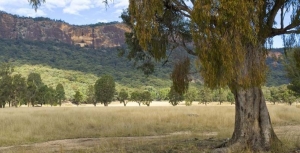Displaying items by tag: funding
Sad Story at the Federal Level
The ABC reported that the May budget has reduced the budget allocation of funding to the biodiversity and conservation division of the Department of Environment and Energy by 25%. As a result the number of jobs will be cut by the full time equivalent of 60 (25% of the total) in the crucial area of threatened species monitoring. The Australian Conservation Fund has found that this department’s budget had been cut by about 60% in the forward estimates since the Coalition won government.
The only new spending on the environment in this year’s budget is the one off $444 million payment to support the Great Barrier Reef 2050 Partnership Program.
The biodiversity and conservation division coordinates the listings of threatened species and their recovery plans, devises Australia's national biodiversity strategy, and coordinates action around the country against invasive species and other biosecurity threats.
Researchers at the Threatened Species Recovery Hub in the Australian government's National Environmental Science Program found about a third of Australia's threatened species and 70% of its threatened ecological communities were not being monitored at all.
The staff reductions could delay threatened species being listed and having recovery plans implemented. Experts have said that it is highly likely species will become extinct and no one will notice.
Australia already has a world beating record of species extinction, which has seen it lose at least 30 mammals and 29 birds since colonisation – the highest mammalian extinction rate in the world. The budget cuts can only make this situation worse.
Senate Inquiry into Faunal Extinctions
The serious situation of species extinctions has been recognised by the Senate. An inquiry is being carried out by the Environment and Communications and References Committee into the ‘faunal extinction crisis’. Its official description is:
An inquiry into Australia's Faunal extinction crisis including the wider ecological impact of faunal extinction, the adequacy of Commonwealth environment laws, the adequacy of existing monitoring practices, assessment process and compliance mechanisms for enforcing Commonwealth environmental law, and a range of other matters.
Click here for more details and to make a submission. Submissions may be made up to 10 September and the committee is due to complete their report by 3 December 2018.
There is already a public consultation process underway for updating Australia’s Biodiversity Conservation Strategy – see STEP Matters issue 194. Submissions closed in March. The submissions on the website (282 in all) roundly condemn the draft new strategy. For example here is what the Threatened Species Scientific Committee has to say:
Overall the committee found the revised plan to be extremely disappointing. In particular, it lacks substance on how Australia will address its international commitments and it fails to provide the direction needed to guide national activities over the coming decade. If Australia’s strategy is to achieve its objectives, and to maintain Australia’s reputation as a global leader in biodiversity conservation, a fresh approach that explicitly lays out a plan with national leadership for real action is needed in the next iteration of the strategy.
The Senate inquiry is taking on a big task that we hope will have the authority to overcome the inadequacies of the process being undertaken by the Department of Environment and Energy.
NSW Government News
2018 Budget
The NSW government is flush with money thanks to the property boom. But, according to the Opposition, the June budget continued the trend of spending below the budget allocation and cutting future allocations to the Office of Environment and Heritage (OEH) for a second year. OEH contains the National Parks and Wildlife Service where 26% of permanent rangers and 35% of area managers have been dismissed.
Last financial year there was a large under-spend of $165 million and this year there was a budget cut of $66 million for the OEH. Together this is $231 million less funding available to spend on the state’s environmental challenges.
$231 million is equivalent to 20% of all spending allocated to OEH in 2018-19.The budget for the OEH is less than the government’s first budget eight years ago.
I did try to verify these figures from the Budget Papers but they keep on changing the descriptions of funding categories so it is impossible to compare year on year figures.
Another Challenge to the Land Clearing Codes
Conservationists have been very unhappy about the NSW government’s attitude to the environment for a long time. One of their worst actions is the relaxation of the land clearing codes under the so-called Biodiversity Conservation Act.
In March the Nature Conservation Council won a case in the Land and Environment Court that declared the native vegetation clearing code that came into force in August 2017 was invalid. The grounds for the decision were based on a technicality that the primary industries minister failed to follow due process and obtain the concurrence of the environment minister before making the codes, as required by law. The government immediately reintroduced the same codes without any consideration of the objections for scientists.
Now the Nature Conservation Council has found better grounds to fight against the land clearing code and has launched another legal action through the Environment Defenders Office (EDO).
On the basis of the documents received under freedom of information laws, it appears that the minister for the environment failed to give proper, genuine and realistic consideration to the decision to grant concurrence for the making of the 2018 code and to the principles of ecologically sustainable development, as required by law. The documents indicate that the minister for the environment did not have sufficient time or material to enable to her to make the decision and that as a result, the 2018 code was made unlawfully.
The CEO of the EDO David Morris has stated:
This is a remarkable state of affairs. The legal regime makes it clear: the responsibility for ensuring that the code does not have an unacceptable impact on the environment lies with the Environment Minister. The code is predicted to have significant and far reaching impacts to biodiversity.
Further Details of the Code
The land clearing code allows landholders to carry out significant amounts of self-assessed clearing of native vegetation without further approval or environmental assessment, including in areas that might be home to threatened species and ecological communities. It doesn’t require any cumulative assessment of greenhouse gas emissions arising from clearing under the code. Under the Biodiversity Conservation Act 2016 both clearing and climate change are listed as key threatening processes to biodiversity. Climate change is the greatest long-term threat to biodiversity.
While the 2017 code was intended to be released with native vegetation regulatory maps to assist landholders to identify where clearing of native vegetation on rural can and cannot occur, those maps are yet to be released, which means landholders continue to be required to self-assess whether such land management clearing codes even apply to their land.
If this case is successful, it will mean that there has not been a valid code in force under the act since the new native vegetation laws came into force. Given the ongoing legal uncertainty around the code, any clearing done in reliance on the code is potentially unlawful.


